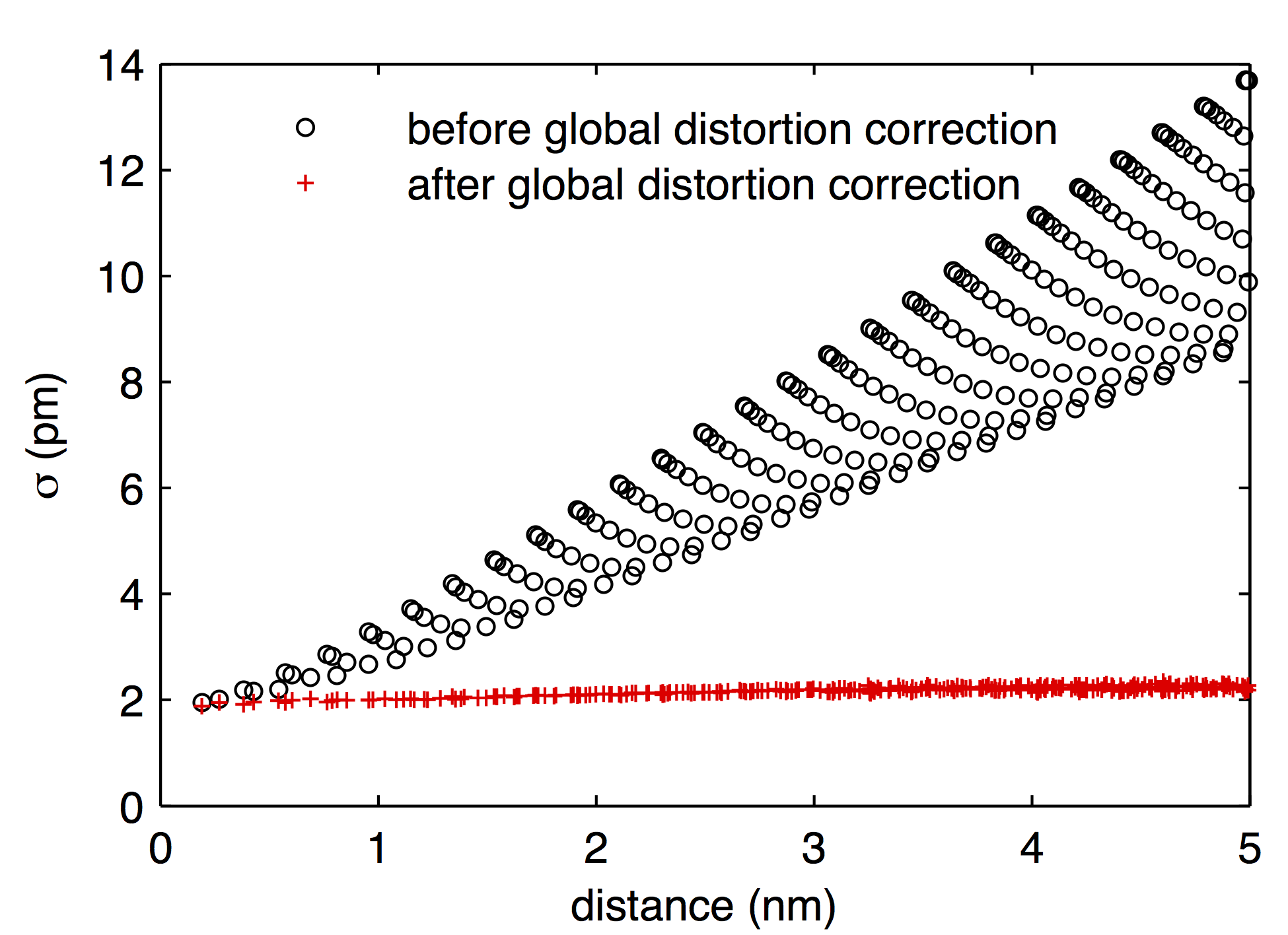IT-2-O-2881 Putting a New Spin on Scanning Transmission Electron Microscopy
While STEM is essential to the atomic scale characterization of materials, for example at defects, interfaces, or even in perfect crystals, measurement of atomic displacements and distances has remained challenging due to the presence of sample drift. Distortion proportional to the rate of sample drift during image acquisition hinders the accurate measurement or even representation of the atomic structure. Though modern STEM installations are optimized to reduce temperature fluctuations, sample drift generally remains. Here, we report the development of revolving scanning transmission electron microscopy (RevSTEM), a STEM acquisition and data processing technique designed to eliminate drift distortion [1]. The method uses a series of fast-acquisition STEM images with the scan coordinates rotated between successive frames that introduces a concomitant change in image distortion occurs. The distortion can then be used to determine the sample drift rate and direction across the entire series. We will introduce the projective standard deviation (PSD) to quantify lattice vector angles and distortion in atomic resolution images. Through fitting, we then calculate an inverse affine transformation matrix to restore each image. For a demonstration of the technique, we will provide a case study using images of a Si standard sample experiencing significant drift (530 pm/s) (Figure 1a). We will show that after the RevSTEM process, the images are nearly perfect with symmetric information transfer as shown in the Fourier transform of the RevSTEM image (Figure 1b). For comparison, a conventional STEM image and corresponding FT are shown in Figure 1c-d. Beyond drift distortion, global, residual distortion (GRD) introduced by the scan system typically remains. Using a Si <100> RevSTEM dataset, we will demonstrate the calibration and complete removal of GRD. The choice of <100> Si stems from the projected four-fold symmetry, which ensures that GRD in any direction introduces error in distance measurements. The consequence of GRD is directly observed in the standard deviation of distance measurements as shown in Figure 2. Minute distortion compounds standard deviation error for each n-neighbor atom column pair. We will show that a least squares regression can be used to minimize the standard deviation for each pair by optimizing the parameters of an affine transformation. After correction, RevSTEM images readily achieve < 2 pm precision for all each n-neighbor pair within an image up to 5 nm away. Finally, we will show how these features of RevSTEM unlock new possibilities to directly extract quantitative structural information when combined with detailed density functional theory calculations. Reference: [1] X Sang and JM LeBeau, Ultramicroscopy 138 (2014), p. 28.
The authors acknowledge the use and support of the Analytical Instrumentation Facility at North Carolina State University, which is supported by the State of North Carolina and the National Science Foundation.

